Understanding revenue and expenses
The main goals of any business is to drive revenue and profitability. However, some business owners may not fully realize the importance of tracking their revenue in detail, along with the money their business spends. Not every business owner is an accounting expert, but a little knowledge can go a long way when it comes to tracking revenue and expenses.
Why tracking revenue and expenses matters
Every person who starts a business does so with the intention of making money. The only way to determine if your business is successful in that context is to diligently track your revenue and expenses. Tracking them shows your bottom line, which indicates the current financial health of your business. That’s the single most important reason to stay on top of your revenue and expenses.
In addition, keeping your books updated allows you to view trends and helps you forecast the future. For example, the owner of an ice cream shop that has been open for a few years might notice that revenue is very high during the summer months but decreases during the winter. If there is a clear and consistent pattern, this can help the owner make smart decisions, such as adding staff to maximize profits in the summer or shortening business hours in the winter to cut down on costs.
Finally, keeping good financial records saves you stress and anxiety when tax season rolls around. Rather than scrambling to make sense of how much money your business made and spent the previous year, you’ll have peace of mind knowing your financial records are current and accurate.
Important tools
Balance sheet—this is one of the most important financial statements for your business. It provides an overview of what you own and what you owe. A detailed balance sheet helps you determine the overall financial strength of your business.
Profit and Loss statement—also known as an Income Statement—shows your income coming in (revenue) and your costs going out (expenses). It reflects how your business performs over a set amount of time, such as month, quarter or year.
Terms to know:
- Revenue—this is the money your business brings in during the month. Revenue is also referred to as your “top line” number because it’s the first item listed on a profit and loss statement.
- Expenses—this is what the business spends.
- Cost of Goods Sold—this is typically the direct cost of selling your product/service.
- Overhead expenses—this is typically the indirect and fixed costs of operating your business.
- Margin—this is a measure of how much money your business makes
- Gross Profit = Revenue – Cost of Goods sold.
- Businesses look at this as a % (Gross profit / Revenue)
- Net Operating Profit Margin = Gross Profit – Operating expense
- Businesses look at this as a % (Net Operating Profit margin / Revenue)
- Gross Profit = Revenue – Cost of Goods sold.
Here’s an example for reference from a Tshirt store:
A t-shirt from your supplier costs $5 and is sold it to a customer for $20, your gross profit is $15/shirt.
| Tshirt example | |
| Sales price | $20.00 |
| Cost per shirt | $5.00 |
| Gross Profit Margin | $15.00 |
| 75% | |
| Quantity sold | 300 |
| Revenue | $6,000 |
| Cost | $1,500 |
| Gross Profit | $4,500 |
| 75% | |
| Rent | $800 |
| Insurance | $200 |
| Payroll | $2,400 |
| Tax | $240 |
| Utilities | $500 |
| Operating Expense | $4,140 |
| Net Operating Profit | $360 |
| 6% |
Accounts to track:
- Cash: tracks when your business makes or receives a payment.
- Inventory: the value of products or materials you have in stock.
- Accounts Receivable: tracks when you sell something buy don’t receive payment immediately.
- Accounts Payable: tracks what you owe vendors.
- Sales: tracks revenue from selling your product or service.
- Purchases: tracks materials and goods that you buy for the business.
- Payroll: the amount you pay employees and yourself.
- Taxes: amounts paid for payroll tax, property tax, state tax and/or federal tax.
- Credit cards / Short term debt: amount you owe < 1 year, may be at a higher interest rate.
- Loans payable / Long term debt: amount you owe > 1 year. This is typically term loans.
- Owners’ equity: the amount of money each owner has put into the business.
- Retained Earnings: tracks any profits that are reinvested into the business and not paid out to owners. This is a great tool to gauge how your business has performed since you opened the doors.
Create healthy accounting habits
Tracking revenue and expenses, and all bookkeeping, can be tedious! Yet it’s crucial to maintaining the financial health of your business. Getting into the habit of tracking your financial accounts on a daily basis will go a long way toward improving your money management skills and keeping you on top of your financials.
If you start to become overwhelmed, consider bringing in outside help to assist with your accounting. This will ensure that your bookkeeping is up to date, and also free up time for you to concentrate on making your business grow.
Key takeaways
- The only way to tell if your business is successful is by tracking revenue and expenses.
- Your balance sheet tells you what you own and what you owe.
- A profit and loss statement reveals your net income.
- You should be tracking your cash, inventory, accounts receivable, accounts payable, sales, purchases, payroll, taxes, short and long term debt, owners’ equity and retained earnings.


